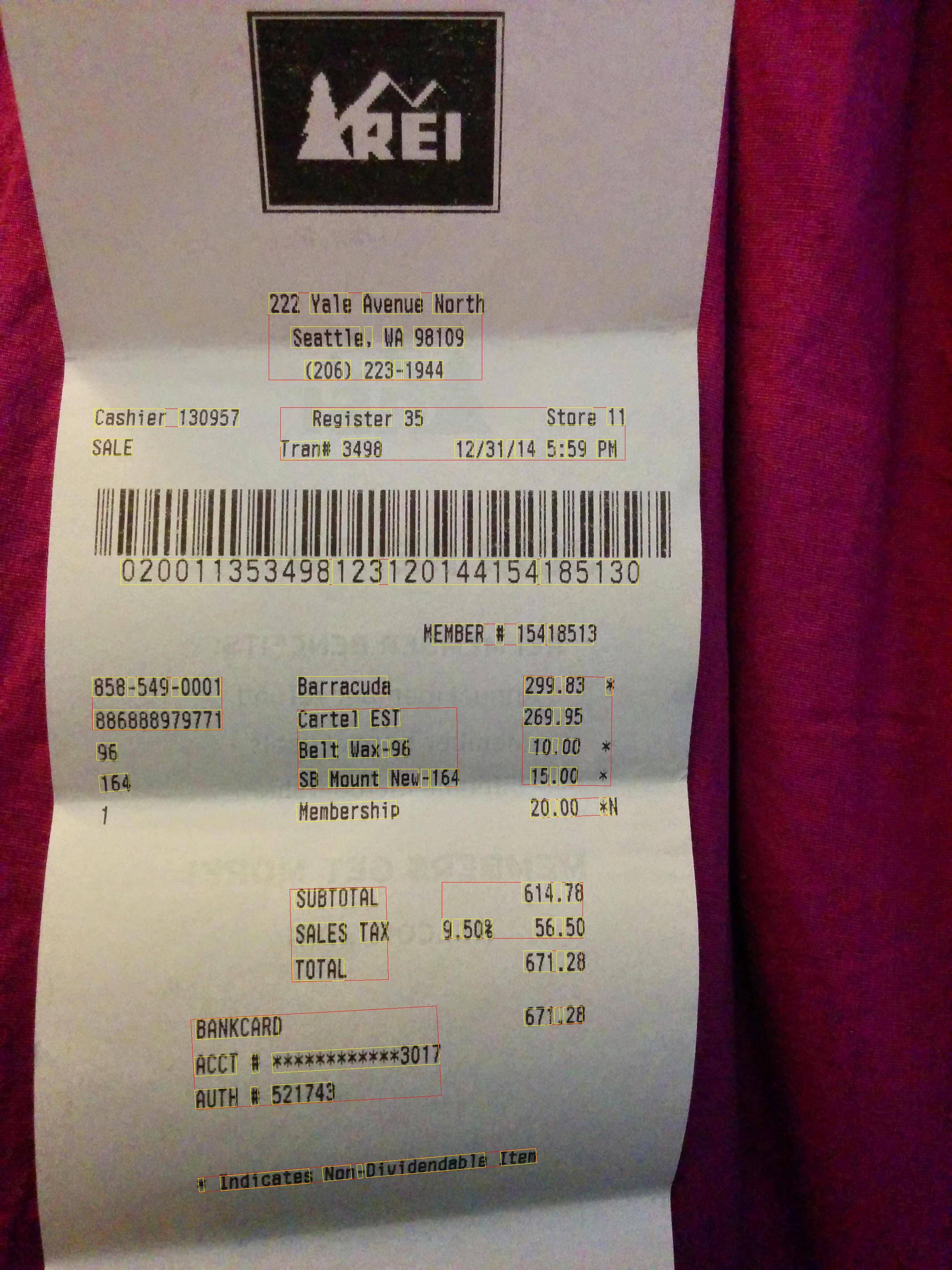オーディエンス
このチュートリアルの目的は、Google Cloud Vision API のドキュメント テキスト検出機能を使用してアプリケーションを開発する方法を学ぶことです。このチュートリアルは、基本的なプログラミング構成やテクニックの知識があることを前提としていますが、プログラミングの初心者の方にも簡単に操作できるように設計されています。Cloud Vision API リファレンス ドキュメントを参照しながらチュートリアルに従うことで、基本的なアプリケーションを作成できるようになります。
前提条件
- Google Cloud コンソールで Cloud Vision API プロジェクトを設定します。
アプリケーションのデフォルト認証情報を使用するように環境を設定します。
Python
- Python をインストールします。
- pip をインストールします。
- Google Cloud クライアント ライブラリと Python Imaging Library をインストールします。
ドキュメント テキスト OCR を使用して画像にアノテーションを付ける
このチュートリアルでは、DOCUMENT_TEXT_DETECTION リクエストを使用して fullTextAnnotation レスポンスを処理する基本的な Vision API アプリケーションについて段階的に説明します。
fullTextAnnotation は、画像から抽出された UTF-8 テキストを階層構造で表現したレスポンスで、ページ→ブロック→段落→語→記号のように編成されています。
Pageは、ブロックの集まりに、ページについてのメタ情報、つまりサイズ、解像度(X 解像度と Y 解像度が違う場合がある)を付加したものです。Blockは、ページの「論理的」要素の一つを表します。たとえば、テキストで埋め尽くされている領域や、列と列の間にある図や区切りなどです。テキスト ブロックとテーブル ブロックには、テキスト抽出に必要な主要な情報が含まれています。Paragraphは、順序付けられた単語列を表すテキストの構造単位です。デフォルトで単語は、単語区切りで区切られているものとみなされます。Wordは、テキストの最小単位です。これは、記号の配列として表記されます。Symbolは、文字または句読点記号を表します。
また、fullTextAnnotation は、リクエスト中の画像に部分一致または完全一致するウェブ画像を参照する URL を示すこともあります。
完全なコードリスト
Cloud Vision API Python リファレンス を参照しながらコードを読み進めることをおすすめします。
これは、次のタスクを実行する簡単なアプリケーションです。
- アプリケーションの実行に必要なライブラリをインポートする
- 次の 3 つの引数を取得して
main()関数に渡します。image_file- アノテーションを付ける入力画像ファイルoutput_file- Cloud Vision が生成する、描画された多重ボックスを含む出力画像の出力ファイル名
- サービスと対話する
ImageAnnotatorClientインスタンスを作成する - リクエストを送信してレスポンスを返す
- テキストの周囲にボックスが描画された出力画像を作成する
コードの詳細
ライブラリのインポート
標準ライブラリをインポートします。
argparse。アプリケーションが入力ファイルの名前を引数として受け入れます。FeatureType列挙型のenumio。ファイル I/O 用
その他のインポート:
google.cloud.visionライブラリ内のImageAnnotatorClientクラス: Vision API へのアクセスを提供するgoogle.cloud.visionライブラリ内のtypesモジュール: リクエストを作成するPILライブラリのImageライブラリとImageDrawライブラリ: 入力画像にボックスが描かれた出力画像を作成するために使用する
アプリケーションの実行
ここでは、渡された引数を解析し、それを render_doc_text() 関数に渡します。
API に対する認証
Vision API サービスと通信する前に、事前に取得した認証情報を使用してサービスを認証する必要があります。アプリケーション内で認証情報を取得する最も簡単な方法は、アプリケーションのデフォルト認証情報(ADC)を使用することです。デフォルトで、Cloud クライアント ライブラリは GOOGLE_APPLICATION_CREDENTIALS 環境変数から認証情報の取得を試みます。この環境変数はサービス アカウントの JSON キーファイル(詳しくはサービス アカウントの設定を参照)を指している必要があります。
API リクエストの作成とレスポンスからのテキスト境界の読み取り
Vision API サービスの準備ができたら、ImageAnnotatorClient インスタンスの document_text_detection メソッドを呼び出すことにより、サービスにアクセスできます。
API へのリクエストとそのレスポンスの詳細は、クライアント ライブラリによりカプセル化されています。リクエストの構造の詳しい情報については、Vision API リファレンスをご覧ください。
クライアント ライブラリによるリクエスト処理後のレスポンスには、AnnotateImageResponse が含まれます。これは、リクエストで渡された各画像の画像アノテーション結果のリストで構成されます。今回はリクエストで画像を 1 つだけ送信したため、full TextAnnotation を扱い、指定されたドキュメント機能のための境界を収集します。
アプリケーションの実行
アプリケーションを実行するには、この receipt.jpg ファイルをダウンロードし(場合によってはリンクを右クリックすることが必要)、ローカルマシン上のファイルのダウンロード場所をチュートリアル アプリケーション(doctext.py)に渡します。

Python コマンドと、テキスト アノテーション出力画像を以下に示します。
$ python doctext.py receipt.jpg -out_file out.jpg
次の画像では、単語が黄色で、文が赤で示されています。

これで完了です。Google Cloud Vision のフルテキスト アノテーションを使用してテキスト検出を実行しました。
